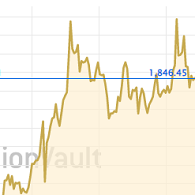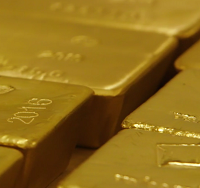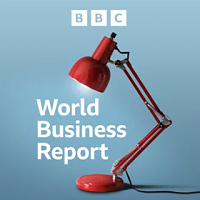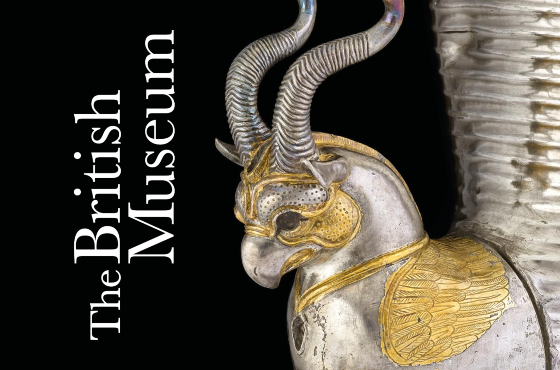The 'Big Idea' of Cigar Butt Investing
How to get rich slowly and surely with value...
THERE is a great deal of redundancy, me-tooism and superfluity in the
provision of fund management,
writes Tim Price at Price
Value
Partners.
There are too many funds out there versus legitimate
investor demand. ('Many are
launched, but few are chosen.') More fund managers should be asked, 'What's your big idea?'
This is an easy
question to ask, but a tough question to answer briefly.
The great value
investor, Benjamin Graham, did a
pretty good job of answering briefly when he wrote, in the very last chapter of 'The Intelligent
Investor':
"Confronted with a challenge to distil the secret of sound investment into three words, we venture the
motto: MARGIN OF
SAFETY."
Those three words contain an entire universe of wisdom.
Safety, of course,
means different things to different people. And these days, real safety is a tough thing to come by – it
may even be
impossible.
Nevertheless, here's our preferred definition. If we first define
risk as the likelihood of
incurring a permanent loss of capital – the complete and irreversible destruction of your pension fund,
for example – then safety has
to be the polar opposite. A 'safe' investment, or one approaching the characteristic of safety, is one
that offers the least
foreseeable likelihood of incurring a permanent loss of capital.
To go one
stage further in the cause of
total clarity, a 'safe' investment is one that also accords the investor a meaningful likelihood of
retaining his or her purchasing
power over the medium and longer term.
A lot of things flow from these simple
concepts.
Before we discovered Benjamin Graham, we stumbled upon Daniel Bernoulli. He popped up
within the text of Peter
L.Bernstein's 1998 book 'Against the Gods': a history of risk that we would recommend to any investment
market
'completist'.
Bernoulli, an 18th Century Dutch mathematician and physicist,
once remarked:
"The utility resulting from any small increase in wealth will be inversely proportionate to
the quantity of goods
previously possessed."
It's a rather dry-sounding statement, couched in very
scientific, if not
economist-like, language. But when we came across it in 1998 or 1999, while working for Merrill Lynch,
it struck us like a lightning
bolt.
Bear in mind that, at the time, the world and his wife were stampeding
over themselves in their efforts
to make obscene profits in internet stocks. Our almost immediate response to Bernoulli was to conclude
that "everyone else" was doing
it wrong. What would most matter to our clients, being either affluent, wealthy or very wealthy, would
not be how much they might make
on an investment – but how much they stood to lose.
It was during the first
dotcom boom that we also came
across the wonderful quote by Lord Overstone:
"No warning can save people
determined to grow suddenly
rich."
The only real problem with Benjamin Graham's 'margin of safety'
observation – and all that naturally
flows from it – is that it's a 'get rich slow' or 'stay rich' approach. That may have limited appeal to
those seeking a sudden and
dramatic uptick in their fortunes.
But we think every investor has to pursue an
approach that sits easily
with their own mental furniture. And we're happy to take a patient view of things. Patience favours the
'margin of safety'
investor.
Bernoulli's observation is probably a little closer to conventional
wisdom now. It's difficult for
us to say, because we've been living with a focus on absolute return investing for so long now it's
difficult to remember having ever
invested any other way. But we maintain that Bernoulli still has a claim – among all his other
achievements – to be one of the world's
first behavioural economists.
The likes of Kahneman and Tversky have more
recently confirmed through
extensive research the essential truth of what Bernoulli said three centuries ago: human beings, and
especially wealthy human beings,
hate losing money far more than they enjoy making it. Hence our focus, ever since discovering Bernoulli,
on absolute – as opposed to
market-relative – investing.
So this 'big idea' isn't just good for your
portfolio, it's good for your
psychological health, too.
Like we say, this is genuinely a 'big idea' in every
sense, because its
implications are far-reaching and profound. Let's drill a little deeper into some of the implications of
'margin of
safety'.
One of them is that equity investments, for example, can possess
certain 'safe-ish' characteristics
almost entirely independently of the sector they represent or the type of businesses they are. This is
what Warren Buffett described
as 'cigar butt' investments – shares of businesses that had perhaps one last puff in them but which were
being given away for free. If
you buy shares of any company when those shares are trading at a meaningful discount to that company's
inherent worth / liquidation
value / book value, then you don't even need to worry about the longer term prospects for that company;
if it gets wound up, you still
expect to make a profit.
But 'cigar butt' (aka 'deep value') investing doesn't
interest us so much, just as
Buffett himself moved on from it over the course of his career. Value traps are still traps. Instead,
we're more interested in
sustainable businesses with a history of superior shareholder returns and highly competent management –
but only when the shares of
those businesses happen to be on sale, for whatever reason.
Those last three
words – "for whatever reason" –
are also important. Because one thing that flows from the 'margin of safety' approach, at least from our
perspective, is that price is
far more important than any other subjective characteristic in an investment. Price is in many respects
the only thing that
matters.
A case in point. When we were buying certain mining and commodity
company shares within our fund
several years ago, a number of highly respected analysts at a data and news company that shall remain
nameless (though it rhymes with
'Roomberg') told us that we were mad.
"Iron ore? Oh, that sector's had it. The
commodity boom is
over."
If we had allowed ourselves to fall victim to a (wholly subjective)
narrative about the commodities
market at the time, we would never have made the investments in question, and we and our investors would
have missed out on the
double- and in some cases triple-digit returns that we subsequently enjoyed.
In
other words, so long as any
company's underlying operations are sound, and ideally improving, and that company is making money
whilst carrying little or no debt,
a) it doesn't matter what the crowd thinks about that company or the sector it's in and b) it doesn't
matter that its share price is
temporarily under pressure.
There may even be technical reasons for the share
price to be lagging the rest of
the market that have absolutely nothing to do with that company's underlying profitability or revenue
growth. It might be, for
example, that a large fund just got hit with some heavy redemptions by clients, and is liquidating part
of its portfolio, and shares
of that company just happen to be among those being sold because they're more liquid than the fund's
other holdings. The recent
history of any company's share price tells you almost nothing about its underlying health – only about
sentiment toward that company
in the stock market.
Ben Graham tended to focus on book value as the metric par
excellence, but it's worth
noting that book value today is somewhat less relevant than it was in a pre-Internet, less technological
age, when so many more
businesses were involved in things like extractive industry or manufacturing. In a more services-driven
world, book value struggles to
give a fair reflection of the underlying worth of a business when the intangible value of so many
companies, comprised of things like
brand value and intellectual property, is so high.
But there are plenty of
other 'margin of safety' metrics
we can use. Here are a few others that we use in screening for stock selection:
A minimum 10%
cashflow from operations (CFO) yield
Cashflow from operations is the purest form
of cash that a company can
generate, because it isn't "tainted" by cashflow that can come about from either investment or financing
– both of which can swing
about wildly and be manipulated by management. The CFO yield is calculated by dividing cash from
operations by the total value of the
company's debt and equity.
A price / earnings (p/e) ratio of less than
15 times
This is a classic Ben Graham metric. This can be calculated by dividing a company's share price by its
earnings per share. Clearly a
number of companies will be excluded from any list selected by limiting the target p/e ratio, but who
said you needed to own the whole
market anyway? The 'margin of safety' investor is more focused, remember, on capital preservation – and
owning growth stocks trading
on high multiples is also risky, especially when a bull market goes into reverse. The fundamental beauty
of a 'margin of safety'
approach is that any investor who practises it never has to worry too much about the market turning,
since he's primarily defensively
positioned in the first place.
A price / book ratio of less than
1.5x
And,
ideally, less than 1x. Clearly, this can mean that one sometimes has to be patient. And in some cases,
some companies may never trade
below book value. But the important thing is that a focus on a low price / book ratio means that the
cautious investor never wildly
overpays for anything.
A debt / total assets ratio of less than
30%
One of the
killers of any company is being overly indebted. Consider poor old Thomas Cook. Here is what seasoned
Japan equity analyst John
Seagrim wrote as the company crashed some time ago:
"For twelve years now
Thomas Cook has not only been
blithely sending holiday makers abroad with absolutely no tangible balance sheet protection at all, but
with an ever growing tangible
black hole in its fuselage – in the last 12 years that tangible black hole has widened 8 fold from Minus
£413ml to Minus
£3.3bn!
"I suppose Thomas Cook's thinking was, who needs tangible book when all
we do is flog European
package holidays to those who don't appear to much like the Europeans, which was sort of fine as long as
long as the weather wasn't –
last year Thomas Cook cited a 'prolonged period of hot weather' (it's called 'summer') as the reason for
their dire 2018
performance.
"One could feel sorry for this (in)famous package holiday pedlar,
but all sympathy evaporates
when one sees the returns package that accompanied their performance. Despite generating a cumulative
12 year Net Loss of £2.685bn –
Thomas Cook generously dished out £366ml in dividends and fished out £300ml in buy backs (but then had
to ask for most of it back
again with a £400ml rights issue 6 years ago), not to mention CEO Fankhauser's generous 'return package'
of £8.3ml over the last five
years.
"The upshot or downshot of this improvidence is that 150,000 stranded
Brits now have to be rescued and
brought back to BorIsland – an evacuation, the scale of which has not been seen since what was left of
the British Expeditionary Force
found themselves on the beaches of Dunkirk in May 1940.
"Call me old fashioned
but I don't much care for this
capitalism without capital thing, I prefer balance sheets stuffed full of tangible equity not ethereal
intangibles like illwill
(Thomas Cook has £2.6bn of so called goodwill (in reality 'illwill') on its balance sheet, which until
this year gave it an illusorily
positive book value). So it's jolly lucky that I do Japan, which is stuffed full of more tangible equity
than any other stock market
in the world!"
(Never hurts to be reminded of the value on offer in
Japan!)
There
are three other 'margin of safety' attributes that we like to see in our investee companies:
- Cash from operations growth: We want our companies to be growing. A short-term revenues blip is acceptable in special situations (nobody's perfect), but we like to ride winners, not losers.
- Return on equity of over 8%, on average, per annum, over the prior five years.
- Share buybacks at appropriate valuations.
Somewhere along the line it became fashionable to become deeply hostile towards share buybacks. Once
again, it's all a question of
valuations.
If a company's board decides to buy back its stock at close to, or
below, book value, it should
be encouraged to do so. Warren Buffett does exactly the same thing at Berkshire Hathaway. Buying back
stock when it is historically
cheap is a perfectly legitimate deployment of corporate capital. Of course, buying back stock when it is
outrageously expensive by any
traditional metric is a grotesque abuse of your shareholders.
If we can only
get across one aspect of the
'margin of safety' approach, it would be to focus on price above absolutely anything else. Not newsflow,
not what the so-called
experts in the mainstream media think, and not about arbitrary forecasts that may or may not be wildly
inaccurate. (Why is nobody ever
held to account for issuing ridiculous forecasts that never come close to reality?)
At a time when many
markets seem egregiously expensive, a focus on 'margin of safety' as the cornerstone of your investment
approach should pay huge
dividends compared to all those investors pursuing a market-relative approach instead.
It's not our 'big
idea', of course. In terms of practising our craft and learning about the world we're merely following
in the footsteps of others.
Bernoulli himself deserves a name check (as does Peter L. Bernstein). Along with the likes of Benjamin
Graham; Adam Smith; Ludwig von
Mises; Richard Feynman; Murray Rothbard; Michael Covel; James Montier; Russell Napier; Warren Buffett
and the late Charlie
Munger.
In any event, as Isaac Newton said in 1675:
"If I have seen further it is by
standing on the shoulders of giants."













 Email
us
Email
us
